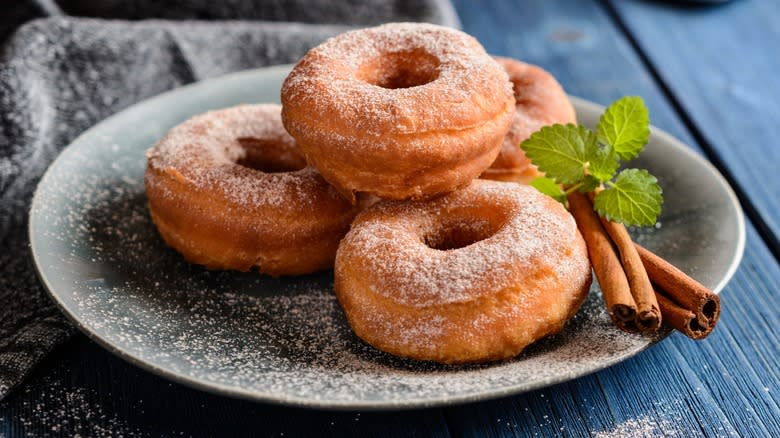The Telltale Sign You Are Overproofing Your Homemade Donuts

There's something incredibly satisfying about biting into a freshly made, warm donut. With their sweet aroma, soft, pillowy texture, and delightful taste, homemade donuts are a joy like few others. But the journey to perfecting these little circles of happiness is fraught with challenges, one of which is mastering the proofing process.
Proofing is the final step in the fermentation process when making dough-based products like bread and donuts. During this stage, the yeast ferments the dough, producing carbon dioxide gas that creates bubbles, making the dough rise. This is what gives donuts their delightful, fluffy texture. However, overproofing occurs when the dough is allowed to rise for too long.
The telltale sign of overproofing is in the dough's appearance and feel. Ideally, when you gently press your finger into the proofed dough, it should leave a small indentation that gradually fills back in. This indicates that the yeast is still active and the dough has the right amount of elasticity and airiness. However, if your dough feels unusually slack, the indentation stays as is, or the dough collapses at your touch, it's a clear sign of overproofing. The yeast has produced too much gas, and the gluten has stretched beyond its limits, resulting in a dough that's lost its strength and elasticity. The outcome? Donuts that are likely to be dense and heavy instead of light and fluffy.
Read more: 23 Whole Foods Baked Goods, Ranked
How To Salvage Over Proofed Dough

So, you've done the poke test and realized your dough has overproofed. Is it time to throw in the towel? Absolutely not. While overproofed dough can't be completely reverted to its original state, there are ways to salvage it and still enjoy delicious donuts. The first step in rescuing overproofed dough is to gently deflate it. Use your hands to press down on the dough, releasing the excess gas that has built up. After deflating, reshape the dough and place it back on the baking tray. Now leave the dough to proof again but for a shorter period this time. Remember to use the poke test here to determine the right moment to stop proofing and transfer your dough to the oven for baking.
All in all, to avoid overproofing, the key is to keep an eye on your dough and to trust your instincts. Make sure your kitchen isn't too warm, as a hot environment can speed up the yeast activity, leading to quicker proofing times. And remember, proofing times in recipes are guidelines, not set in stone. Factors like the type of yeast, the temperature of your kitchen, and even the humidity can affect how long your dough needs to proof.
Read the original article on Tasting Table.

